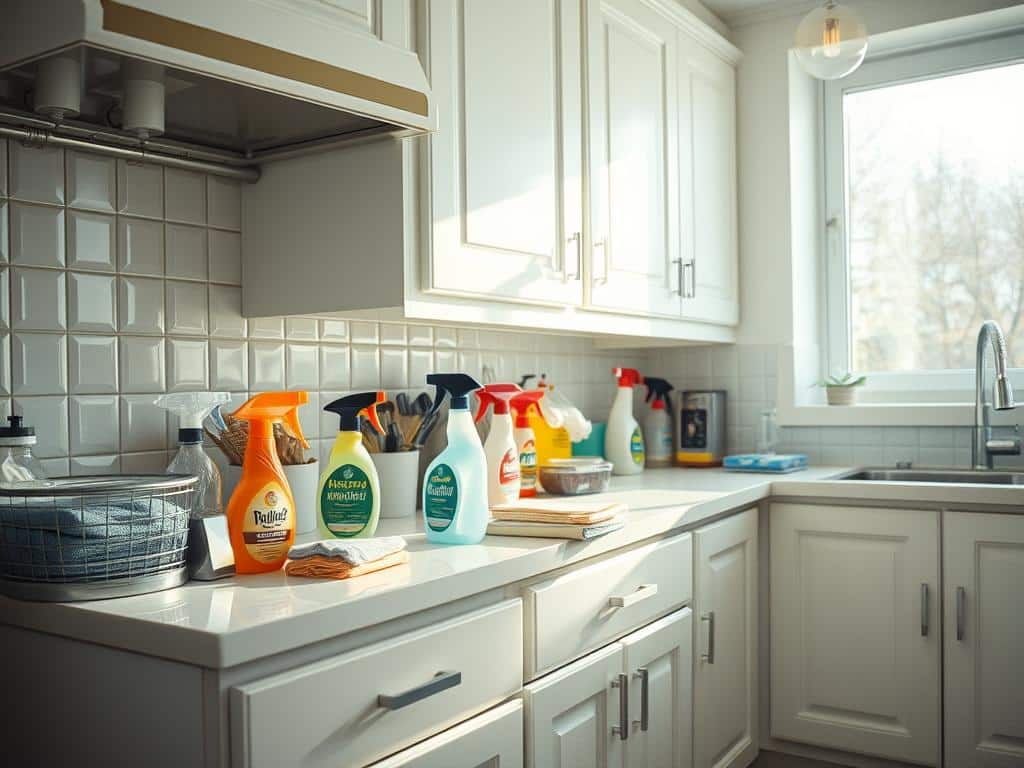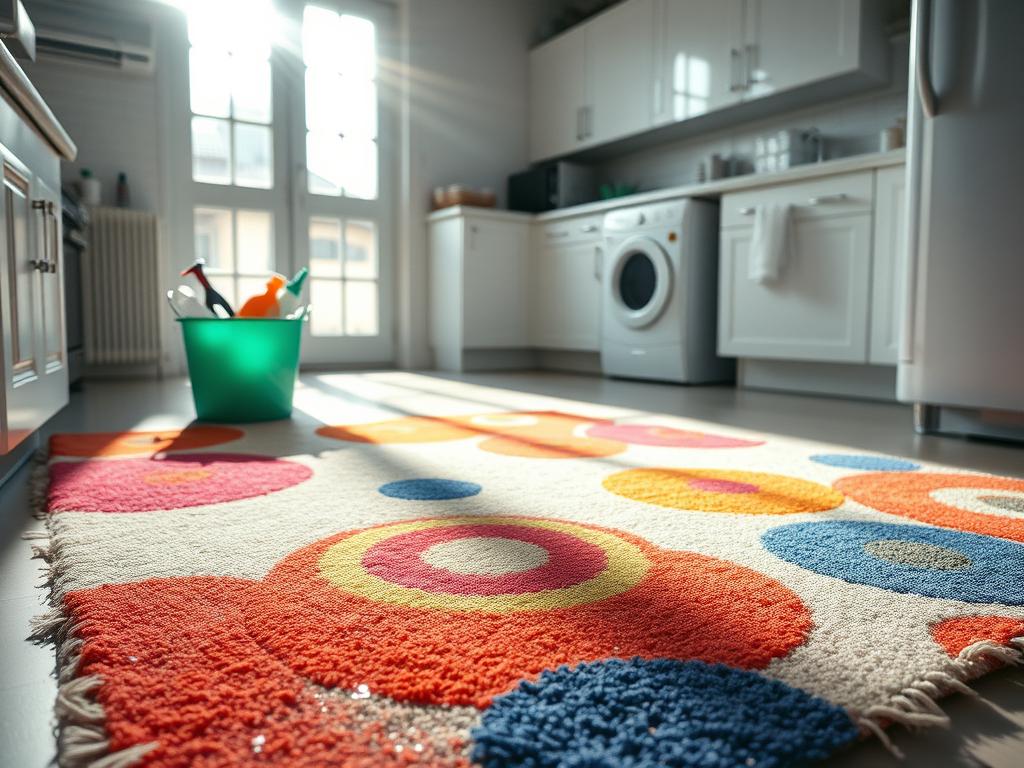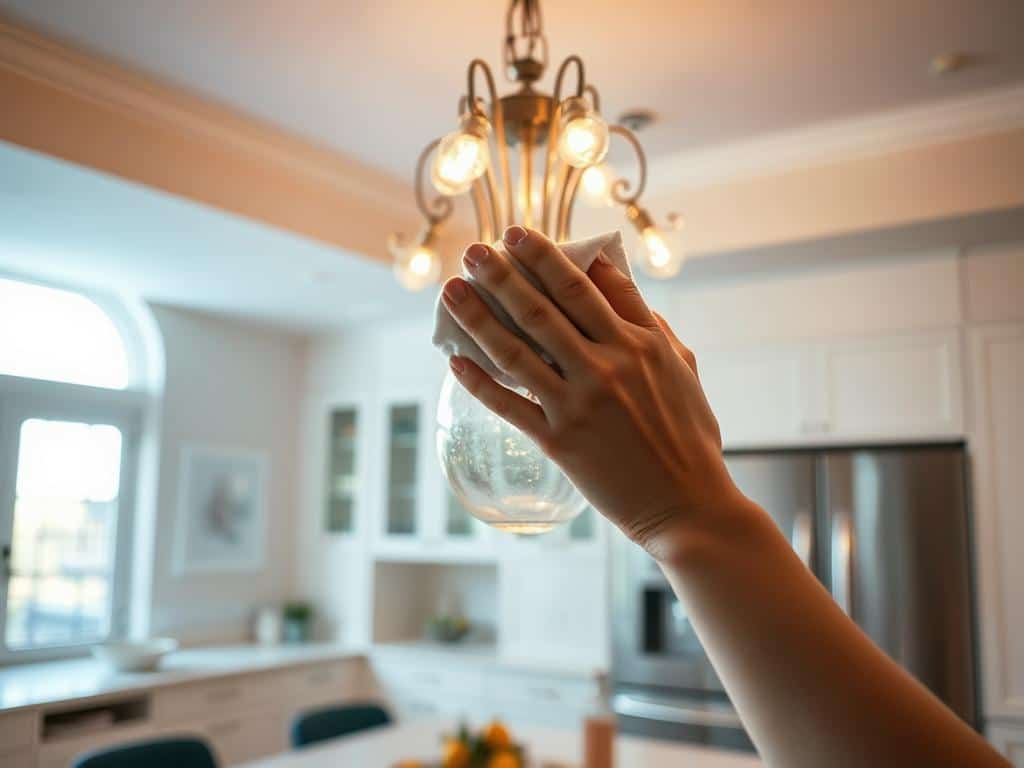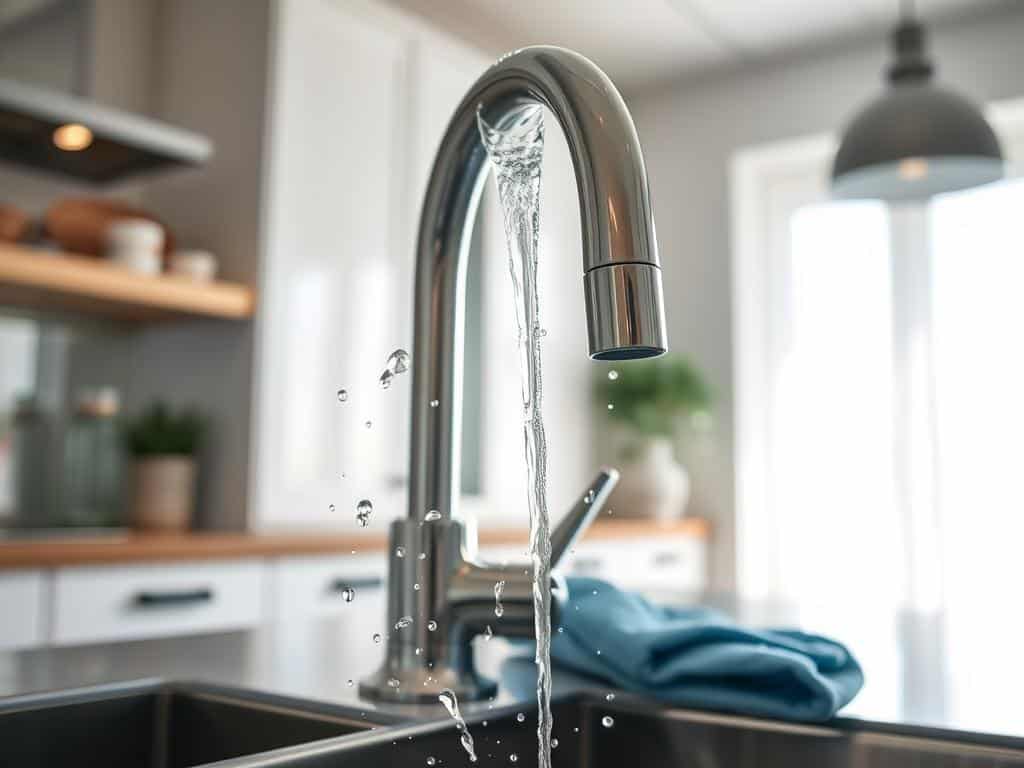
Proper cabinet cleaning is essential to maintain the beauty and longevity of your kitchen cabinets. Whether you are maintaining painted cabinets or caring for wood and laminate, the right approach can make all the difference. Consistent and gentle care helps preserve the finish and structure of your cabinets, while also keeping them looking fresh and new.
For everyday upkeep, it’s recommended to wipe spills and splatters as soon as they occur with a damp cloth. This prevents food residue from hardening and becoming difficult to remove. According to experts, a thorough cleaning should be done weekly with a cabinet cleaner and microfiber cloth, focusing on the outside surfaces. This routine helps avoid buildup and keeps your kitchen looking spotless.
For deep cleaning, you should empty the cabinets completely once or twice a year and clean both the inside and outside surfaces. This thorough process ensures that any hidden grime is removed. Tools such as Parker & Bailey Kitchen Cabinet Cream and Scotch-Brite Delicate Scrub Sponges are excellent for a deep clean without harming the cabinet material. Products like Dawn Dish Soap and Simple Green All-Purpose Cleaner work well for general cleaning, while a microfiber cloth is perfect for dusting and wiping surfaces without chemicals.
For eco-friendly kitchen maintenance tips, consider using biodegradable cleaners like Krud Kutter, which offers an effective yet gentle solution for eco-friendly kitchen cleaning. Ensuring that cabinets are dried immediately after cleaning prevents damage and keeps them in pristine condition.
Regular inspections and maintaining a consistent temperature and humidity level are also crucial steps to prevent potential issues like expansion and contraction, which could lead to hairline cracks.
Cleaning kitchen cabinets does not have to be a daunting task. With the right products, techniques, and routines, you can keep your kitchen cabinets looking beautiful and well-maintained for years to come. By following these guidelines, you’ll enjoy a spotless and organized kitchen space with minimal effort.
The Basics of Regular Maintenance
Maintaining your kitchen cabinets regularly is essential to ensure they remain in top condition and provide a lifetime of use. By incorporating routine cleaning into your schedule, you can effectively prevent dirt and grease buildup, keeping your cabinets fresh and clean. These simple yet effective practices also help in maintaining the aesthetic appeal and improving hygiene by eliminating bacteria and germs.
Gently Wipe and Dust Regularly
One of the fundamental aspects of daily cabinet care is gentle wiping and dusting. It is recommended to dust your cabinets at least once every two weeks using microfiber cloths or soft-bristled brushes. This prevents the accumulation of dust and debris, contributing to a pristine kitchen environment. Additionally, using proper dusting techniques ensures that your cabinet finishes are not compromised.
Handling Daily Spills and Splatters
Spill management is critical in the daily care of kitchen cabinets. Immediate action is essential when dealing with spills and splatters to prevent stains. Use a soft cloth or sponge with warm water and mild dish soap to clean up messes. This practice ensures that your cabinets remain stain-free and reduces the need for aggressive cleaning methods.
Importance of Immediate Drying
Effective moisture control is crucial to preserving the finish and longevity of your kitchen cabinets. After cleaning, it is vital to promptly dry the surfaces using a soft, dry cloth. Moisture left on the cabinets can lead to damage, especially in areas near sinks and dishwashers. By maintaining optimal humidity levels between 35% to 50%, you can further prevent wood expansion and cracking.
Deep Cleaning Techniques for Kitchen Cabinets
Achieving a spotless shine and maintaining the integrity of your kitchen cabinets involve strategic deep cleaning techniques that go beyond daily wipe-downs. These processes help combat stubborn grease, embedded dirt, and persistent stains, ensuring your cabinets look pristine and remain durable over time.
Using a Vinegar and Water Solution
One simple yet effective deep cleaning method is using a 50/50 mix of distilled vinegar and warm water. This vinegar solution works wonders for dissolving grime and grease without harmful chemicals. Start at the top of your cabinets and work your way down, spraying the solution and wiping it clean with a soft cloth. This gentle method is not just for wooden cabinets but can also be used on metal, laminate, and glass surfaces.
The Power of Dish Soap and Warm Water
Another reliable technique involves a mixture of mild dish soap cleaning and warm water. This method is excellent for dealing with everyday buildup, especially on wood surfaces. For best results, clean your cabinets thoroughly every few months to prevent the accumulation of dust, grease, and grime. Always ensure to follow up with a rinse using a damp cloth and dry immediately to keep your cabinets looking their best.
Benefits of Citrus-Based Biodegradable Cleaners
For a deep clean that is tough on dirt yet gentle on the environment, eco-friendly cleaners like the citrus-based Krud Kutter are ideal. These products are biodegradable and cut through grease effortlessly. Applying Krud Kutter or similar citrus-based cleaners not only cleans but leaves a refreshing scent. Simply let the cleaner sit for 2 to 4 minutes before wiping it off, removing even the most stubborn spots without damaging your cabinet’s paint or finish.
| Cleaners | Best Usage | Application Method |
|---|---|---|
| Vinegar and Water Solution | Metal, Wood, Laminate, Glass | Spray and Wipe |
| Dish Soap and Warm Water | Wood, General Cleaning | Wipe Down |
| Krud Kutter | Heavy Grease, Stubborn Stains | Let sit, then Wipe |
Recommended Cleaning Products and Tools
Keeping your kitchen cabinets in top shape requires choosing the right kitchen cleaning products and tools. Integrating the right items into your cleaning regimen ensures effective cabinet care while preserving their finish. This guide provides key recommendations for essential cleaning tools and eco-friendly products to maintain your kitchen cabinets.

Microfiber Cloths and Soft Sponges
Microfiber cloths are excellent for gently wiping down cabinet surfaces without causing any damage. These cloths effectively trap dust and grime, making them superior to regular cloths or paper towels. For a more thorough clean, use soft sponges—especially when dealing with spills and stains. Ensure you rinse the sponges thoroughly to avoid any lingering residue.
Choosing the Right All-Purpose Cleaners
All-purpose cleaners like Krud Kutter, Parker & Bailey Kitchen Cabinet Cream, and Simple Green All-Purpose Cleaner are favorites for their versatility and mild cleaning power. Parker & Bailey Kitchen Cabinet Cream, notable for its grease-cutting ability, works wonders on stubborn stains without damaging the wood. Additionally, Dr. Bronner’s Sal Suds Biodegradable Cleaner offers a powerful, eco-friendly option for various surfaces, including cabinets. Dawn Platinum Powerwash Spray is another effective choice, known for its grease-cutting power, working up to 5x faster than standard dish soaps.
Advantages of Non-Abrasive Scrub Pads
When deeper cleaning is necessary, non-abrasive tools like scrub pads wrapped in cloth are ideal. They help remove stubborn grime without scratching the cabinet surface. For example, a 3 Cloth System—one soapy, one water, and one dry—can be used along with the scrub pads for optimal cleaning and rinsing. These non-abrasive tools are essential for maintaining the longevity and appearance of your cabinets.
Using the right kitchen cleaning products and non-abrasive tools is crucial for effective cabinet care. By selecting eco-friendly products and tools tailored to your specific needs, you can maintain the pristine condition of your cabinets for years to come.
| Product | Features |
|---|---|
| Parker & Bailey Kitchen Cabinet Cream | Grease-cutting, non-abrasive, gentle on wood |
| Dr. Bronner’s Sal Suds Biodegradable Cleaner | Eco-friendly, powerful, suitable for various surfaces |
| Dawn Platinum Powerwash Spray | Efficient, cuts through grease 5x faster |
Specific Tips for Different Cabinet Materials
Cleaning kitchen cabinets effectively requires a material-specific cleaning approach. Each type of cabinet material—painted, wooden, laminate, or glass—demands unique care techniques to maintain its appearance and longevity. Here are some essential tips to help you in cleaning and preserving your cabinet materials.
Cleaning Painted Cabinets
For painted cabinets, it’s crucial to use gentle cleaning methods to avoid damaging the paint finish. Mixing water with baking soda in a 1:2 ratio provides a budget-friendly spot cleaner for painted cabinet tips. This mixture can effectively remove stubborn stains without harming the paint. When handling grease, diluted ammonia can be used cautiously. Always ensure the cabinet surface is dried immediately to prevent moisture damage. Following the wood grain while cleaning painted cabinets helps avoid damage and keeps the paint intact. Avoid direct sunlight exposure, as it can cause fading or discoloration.
Maintaining Wood Cabinets
Wood cabinet preservation involves careful cleaning and regular maintenance. Cleaning wood cabinets with a damp cloth is advised to avoid excessive water, which can compromise the joints and finish. Oil-based soaps like Murphy Oil Soap are excellent for removing residue and nourishing the wood. Weekly spot-cleaning helps maintain cleanliness, and deep cleaning should be performed three to four times a year. Avoid using harsh cleaners, waxes, or polishes, as they can create a film that attracts dirt. For water stains, use a mixture of distilled water and mayonnaise or white toothpaste. Additionally, applying gentle cleaning solutions like 5% dishwashing liquid to 95% water can treat dirt and grease without harming the wood.
Care for Laminate and Glass Cabinets
Laminate cabinet upkeep requires simpler methods but still requires caution. Use mild cleaners, such as a diluted vinegar solution or all-purpose wipes, and avoid abrasive tools that could scratch the surface. Glass cabinet care involves using a specific glass cleaner and a polishing cloth to maintain clarity. Avoid spraying the cleaner directly on the glass to prevent seepage behind mullions or dividers, which could damage surrounding materials. Properly maintaining laminate and glass cabinets ensures they stay pristine without compromising their structural integrity.
For a more detailed daily cleaning routine that includes additional specific cleaning techniques, check out this comprehensive guide.
Preventative Measures to Avoid Damage
To maintain your kitchen cabinetry’s pristine condition, implementing sound preventative measures is essential. Regular cabinet maintenance using gentle protective practices greatly contributes to damage prevention. Steer clear of slamming drawers and doors as these actions can cause significant harm over time. Adjusting how items are stored in your cabinets—ensuring utensils and pots are not jamming against the doors—can effectively contribute to kitchen cabinet preservation strategies.
Maintaining consistent temperature and humidity levels is crucial for protecting wooden cabinets, avoiding potential expansions, contractions, and cracks. Keeping your kitchen environment stable mitigates these risks and safeguards your cabinets’ longevity. Moreover, addressing any functionality issues such as misaligned doors or sticky drawers promptly can prevent minor problems from escalating into larger, more destructive issues.
Proactive measures like spot-cleaning spills immediately with mild cleaners ensure that stains don’t settle and cause lasting damage. Regular dusting with microfiber cloths helps in preventing dust and grime buildup, thus preserving the cabinet finish. Also, avoiding water saturation during the cleaning process is vital as excess moisture can lead to mold growth and cabinet deterioration. Effective damage prevention revolves around consistent and gentle cabinet maintenance, ensuring your kitchen remains functional and aesthetically pleasing for years.
Engaging in kitchen cabinet preservation strategies such as using recommended cleaners and tools ensures your cabinets’ lasting beauty and functionality. Always opt for gentle, non-abrasive cleaning solutions like mild dish soap mixed with warm water for routine cleaning. For tough grease stains, a mixture of hot water, detergent, or vinegar can perform wonders. Remember that regular maintenance paired with these mindful practices leads to the extended life and durability of your kitchen cabinets.
Conclusion
Proper kitchen cabinet care is a cornerstone of maintaining an orderly and inviting kitchen environment. By adhering to regular maintenance routines such as gentle wiping and dusting, you can prevent dirt and grime from accumulating on your cabinets. Handling spills and splatters promptly, combined with immediate drying, ensures that you avoid any potential damage to your cabinets.
For optimal long-term maintenance, integrating deep cleaning techniques is essential. Utilizing a mixture of warm water and mild dish soap for wood cabinets, or diluted vinegar for laminate cabinets, helps remove stubborn grease and keeps surfaces spotless. Additionally, maintaining a bi-annual deep cleaning schedule ensures both interior and exterior surfaces remain in prime condition. Managing specific material care, like using non-abrasive cleaners on painted cabinets, offers further protection.
Implementing preventive measures, such as avoiding exposure to high heat and high moisture and frequently cleaning handles with disinfectant wipes, significantly extends the lifespan of your cabinets. With Americans dedicating an average of 37 minutes daily to housework, these simple yet effective kitchen cabinet care practices seamlessly fit into everyday routines. Prioritizing cleaning best practices not only enhances the visual appeal of your kitchen but also promotes a well-maintained, cherished home space.



